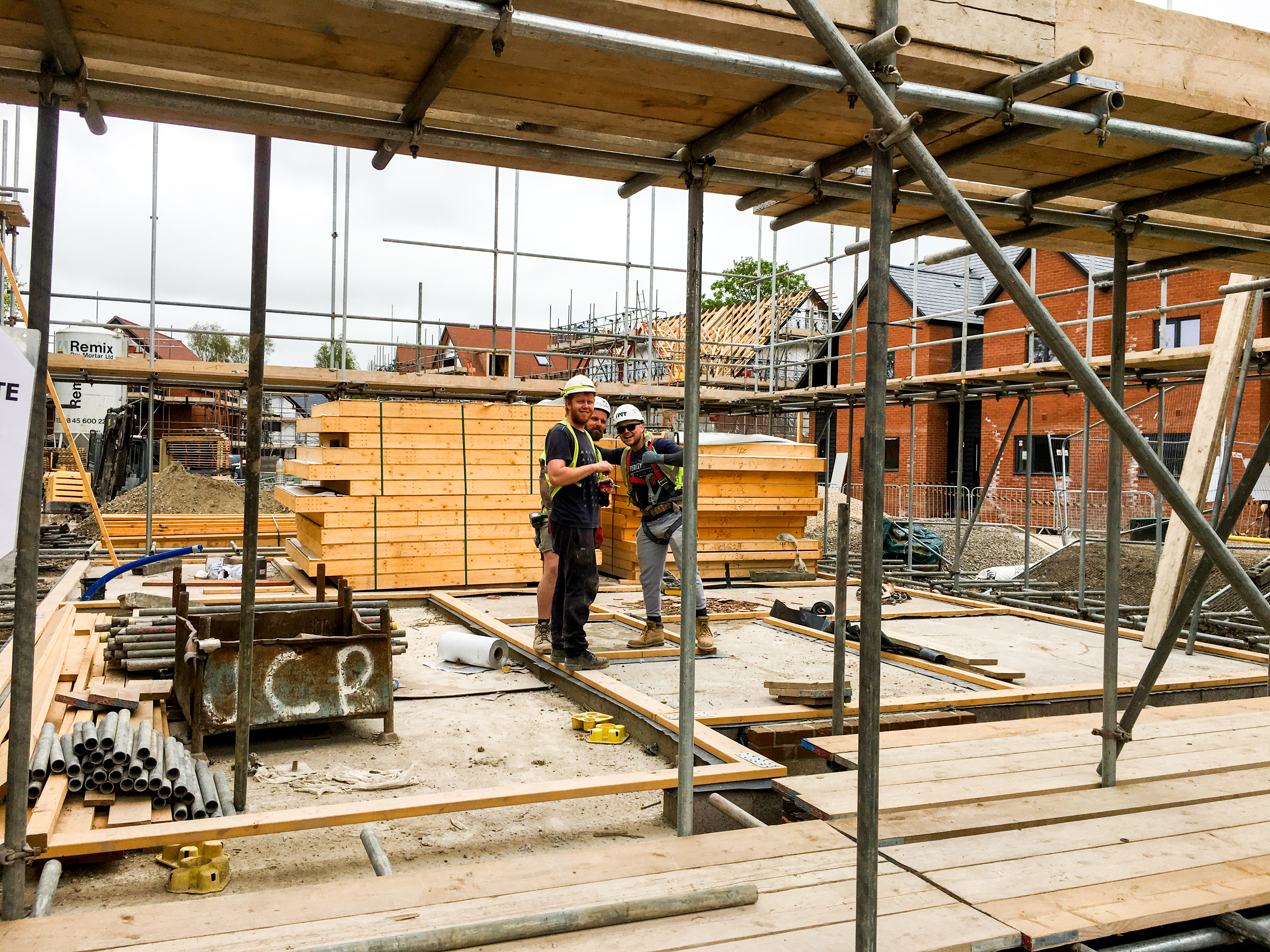You are here: Is timber frame construction a thing of the past?
It is almost impossible to tell whether a home is timber framed just by looking at it, so you might imagine it is a practice that we have long-since forgotten.
You’d be wrong. Timber frame might not be as obvious in a new home as in the medieval buildings of Chester or York, but scratch the surface and you will find wood in abundance. According to Kinedo, more than 70% of the global population lives in a timber frame home.

The benefits of timber construction
“Once the basic frame has been constructed,” explains Armstrong Supplies, “the outside of the building is wrapped with [insulation] and a waterproof barrier before an external wall – usually made from either brick or stone – is built. Since the 1990s, timber-frame buildings in the UK are typically made in a factory and then quickly assembled on-site by a trained team. This prefabrication allows for architects and builders to achieve the highest levels of dimensional accuracy and precision, thanks to the strict quality control methods applied to all materials prior to them arriving on site.”
Timber frame construction is also quicker to erect than traditional brick and block work. Not only does this mean trades need to be on site for less time, which reduces costs: it also allows the work to be slotted in between other jobs, or to fit with good weather.
Redrow opted for timber frame construction in Cambridge and, said the company’s Tonia Tyler, “one of the reasons we have reverted to this traditional method is to overcome a shortage of concrete blocks, but it is also a fast, reliable and sustainable technique enabling each home to be made watertight quicker so the components aren’t exposed to the elements.”
As Homebuilding & Renovating points out, if you are using a timber frame construction to extend and “your proposed extension meets certain criteria in terms of size and position, then you may be able to extend under Permitted Development Rights (PD)”, in which case it wouldn’t require planning permission. Check with your local authority before making any assumptions, though.
Timber and the environment
Moreover, as Alex Dalton notes in Builders’ Merchant News, there is a positive environmental consideration, too. “Timber frame homes are often thought of as a lightweight form of construction, but don’t be misled. It is a custom-made structure that is remarkably strong and durable. There are many advantages to timber frame construction, but its best-known quality is its environmental excellence.”
Timber is both renewable and biodegradable, doesn’t need a great deal of processing to convert from tree to building material and, because it is often milled not too far from where it is sold and ultimately used, the environmental costs of transport are reduced, too.
“Building a timber frame house will result in far lower CO2 emissions than a traditional brick build,” says Kinedo. “And if the wood is ethically sourced, with all trees replanted, the environmental credentials are even more impressive.”
No wonder the method remains popular to this day. Barratt said that it aimed to use timber frame construction in at least a third of the homes it produced this year and, just last year, it bought one of the UK’s largest timber frame manufacturers.
Far from being a fringe or alternative building option, it looks like timber’s future could be brighter than ever.
If you are thinking of buying a new home, you may find some of these services useful
Building Surveys
I want a local surveyor to do a Building Survey for me
Conveyancing
Find help with conveyancing
Mortgage Brokers
I need help getting a mortgage
Home Condition Surveys
Find local experts and compare prices
Homebuyer Survey
I want a local surveyor to do a homebuyer survey for me
Snagging Surveys
Find local experts and compare prices